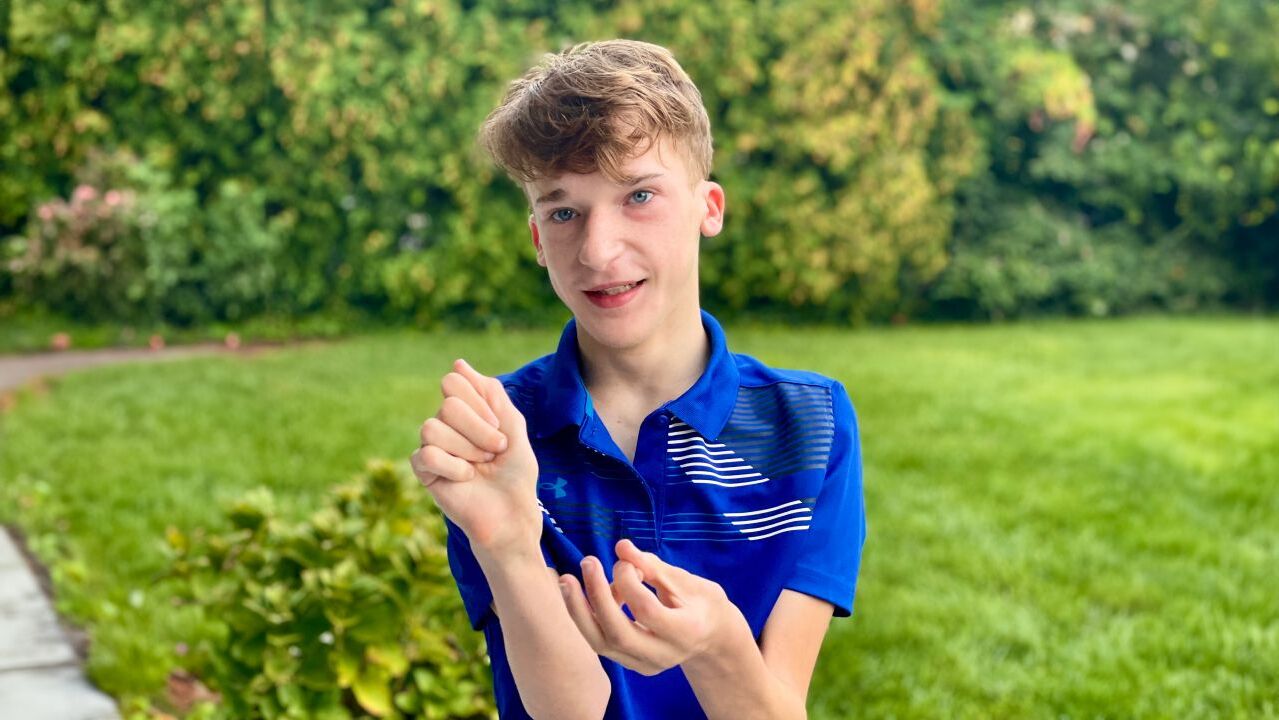
What is Mowat-Wilson Syndrome? Mowat-Wilson Syndrome (MWS) is a rare genetic disorder caused by mutations or deletions in the ZEB2 gene. This condition leads to a unique set of physical and developmental features. Individuals with MWS often have distinctive facial characteristics, severe intellectual disability, and various congenital anomalies. These anomalies can include heart defects, Hirschsprung disease, and structural brain abnormalities. Despite these challenges, many people with MWS have a cheerful demeanor and a characteristic smiling expression. Understanding MWS is crucial for providing appropriate care and support to those affected, ensuring they lead the best quality of life possible.
Key Takeaways:
- Mowat-Wilson Syndrome is a rare genetic disorder with distinctive facial features, intellectual challenges, and various health complications, affecting individuals worldwide.
- Early recognition of Mowat-Wilson Syndrome's unique facial characteristics and common health issues is crucial for timely diagnosis and intervention.
What is Mowat-Wilson Syndrome?
Mowat-Wilson syndrome (MWS) is a rare genetic disorder that affects various parts of the body. It was first identified in 1998 and has since been recognized for its distinct physical and developmental features.
- Definition: MWS is caused by mutations or deletions in the ZEB2 gene, located on chromosome 2q22.
- Clinical Delineation: The condition was clinically delineated by David R. Mowat and Meredith J. Wilson in 1998.
- Prevalence: It is estimated to occur in approximately 1 in 50,000 to 100,000 births.
- Autosomal Dominant: MWS is an autosomal dominant disorder, meaning a single copy of the mutated ZEB2 gene is enough to cause the condition.
- Genetic Cause: The disorder is primarily caused by de novo loss-of-function mutations or total deletions of the ZEB2 gene.
Distinctive Facial Features
One of the most recognizable aspects of MWS is the unique facial characteristics that individuals with the syndrome often exhibit.
- Facial Features: Children with MWS have a square-shaped face, deep-set and widely spaced eyes, a broad nasal bridge with a rounded nasal tip, large flaring eyebrows, and uplifted earlobes with a central depression.
- Facial Features in Adults: As individuals age, their facial features become more pronounced, including an elongated face with heavy eyebrows and a pronounced chin and jaw.
- Smiling Expression: People with MWS often have a smiling, open-mouthed expression, which is a characteristic feature of the condition.
Developmental and Intellectual Challenges
MWS significantly impacts cognitive and motor development, leading to various challenges.
- Intellectual Disability: MWS is associated with severe intellectual disability in almost all cases, though a small minority may have moderate intellectual disability.
- Speech Impairment: Speech is typically limited or absent in individuals with MWS, with some learning to speak only a few words. Many can understand others' speech and some use sign language to communicate.
- Delayed Development: Children with MWS experience delayed development of motor skills such as sitting, standing, and walking.
Health Complications
MWS can lead to a variety of health issues, affecting multiple organ systems.
- Hirschsprung Disease: More than half of individuals with MWS are born with Hirschsprung disease, an intestinal disorder causing severe constipation, intestinal blockage, and enlargement of the colon.
- Chronic Constipation: Even without Hirschsprung disease, chronic constipation is a common issue in people with MWS.
- Microcephaly: Many individuals with MWS have an unusually small head (microcephaly).
- Structural Brain Abnormalities: The condition is often associated with structural brain abnormalities, contributing to intellectual disability and other neurological issues.
- Epilepsy: Seizures are a common feature of MWS, affecting many individuals with the condition.
- Congenital Heart Defects: Heart defects are another common feature of MWS, which can require specialized medical care.
- Genitourinary Anomalies: Genitourinary anomalies, such as hypospadias in males, are also associated with MWS.
- Agenesis of the Corpus Callosum: Agenesis of the corpus callosum, where the corpus callosum is partially or completely absent, is another common feature of MWS.
- Eye Anomalies: Eye anomalies, including issues with vision and eye structure, can occur in individuals with MWS.
- Short Stature: Short stature is a common feature of MWS, with many individuals having growth restriction.
Diagnosis and Under-Diagnosis
Despite its distinct features, MWS can sometimes be under-diagnosed, especially in the absence of certain symptoms.
- Variable Congenital Malformations: The condition is characterized by variable congenital malformations, which can include a range of physical and developmental issues.
- Under-Diagnosis: MWS is likely under-diagnosed, particularly in patients without Hirschsprung disease, as the condition can present with a wide range of symptoms.
- Distinctive Facial Gestalt: The distinctive facial features of MWS are crucial for initial clinical diagnosis and warrant further genetic testing, even in the absence of Hirschsprung disease.
Genetic and Sporadic Cases
Most cases of MWS occur sporadically, but there are rare instances of familial recurrence.
- Sporadic Cases: The majority of MWS cases reported are sporadic, meaning they occur without a family history of the condition. However, rare cases of sibling recurrence have been observed.
- Rehabilitation Needs: Individuals with MWS require early and ongoing rehabilitation, including physical therapy, psychomotor therapy, and speech therapy to maximize their developmental potential.
- Medical Subspecialist Care: Depending on the specific health issues present, individuals with MWS may require care from various medical subspecialists, such as cardiologists for heart defects and gastroenterologists for intestinal issues.
Supportive Care and Treatment
Managing MWS involves a comprehensive approach to address the various health challenges associated with the condition.
- Supportive Care: The primary treatment for MWS is supportive care, focusing on managing the various health issues associated with the condition.
- Genotype-Phenotype Analysis: Studies have shown that facial gestalt and delayed psychomotor development are constant clinical features of MWS, while the frequency and severity of congenital malformations vary.
- Atypical Phenotypes: In a small number of cases, unusual mutations can lead to an atypical phenotype, which may not conform to the typical clinical features of MWS.
Diagnostic Criteria and Differential Diagnosis
Accurate diagnosis is essential for effective management and care of individuals with MWS.
- Pathological Mechanism: Haploinsufficiency of the ZEB2 gene is the primary pathological mechanism underlying MWS, with many reported deletions or truncating mutations.
- Diagnostic Criteria: The diagnosis of MWS is confirmed by demonstrating a pathogenic variant (mutation) in the ZEB2 gene through molecular genetic testing.
- Differential Diagnosis: MWS can be differentiated from other conditions such as Smith-Lemli-Opitz syndrome, Angelman syndrome, and Goldberg-Shprintzen megacolon syndrome based on its unique set of clinical features.
Global Presence and Demographics
MWS affects individuals worldwide, regardless of ethnicity or geographic location.
- Ethnic and Geographic Distribution: MWS has been described in various countries and ethnic groups around the world, indicating its global presence.
- Male/Female Ratio: The male/female ratio for MWS is approximately 1.42:1, although the condition affects both males and females equally.
Early Signs and Common Health Issues
Recognizing early signs and common health issues can help in timely diagnosis and intervention.
- Clinical Features in Infants: Infants with MWS may present with a range of clinical features including microcephaly, narrow chin, cupped ears with uplifted lobes, deep and widely set eyes, open mouth, wide nasal bridge, and shortened philtrum.
- Common Health Issues: Common health issues associated with MWS include Hirschsprung disease, congenital heart disease, genitourinary anomalies, and absence of the corpus callosum.
Communication and Psychomotor Development
Despite challenges, individuals with MWS can develop ways to communicate and improve their motor skills.
- Speech Development: Speech development in individuals with MWS is typically delayed until mid-childhood or later, and even then, it may be limited to a few words.
- Receptive Language Skills: Despite speech limitations, many individuals with MWS have preserved receptive language skills, allowing them to understand others' speech.
- Psychomotor Development: Psychomotor development is delayed in all patients with MWS, necessitating early and ongoing rehabilitation to maximize their developmental potential.
Understanding Mowat-Wilson Syndrome
Mowat-Wilson Syndrome (MWS) is a rare genetic disorder with distinct physical and developmental features. Caused by mutations in the ZEB2 gene, MWS affects various body parts, leading to intellectual disability, speech impairment, and delayed motor skills. Common issues include Hirschsprung disease, epilepsy, congenital heart defects, and structural brain abnormalities. Facial features like a square-shaped face, deep-set eyes, and uplifted earlobes help in diagnosing the condition. Early and ongoing rehabilitation, along with supportive care, are crucial for managing MWS. Despite its challenges, understanding and recognizing the syndrome can lead to better care and improved quality of life for those affected. Awareness and early intervention make a significant difference.
Frequently Asked Questions
Was this page helpful?
Our commitment to delivering trustworthy and engaging content is at the heart of what we do. Each fact on our site is contributed by real users like you, bringing a wealth of diverse insights and information. To ensure the highest standards of accuracy and reliability, our dedicated editors meticulously review each submission. This process guarantees that the facts we share are not only fascinating but also credible. Trust in our commitment to quality and authenticity as you explore and learn with us.


